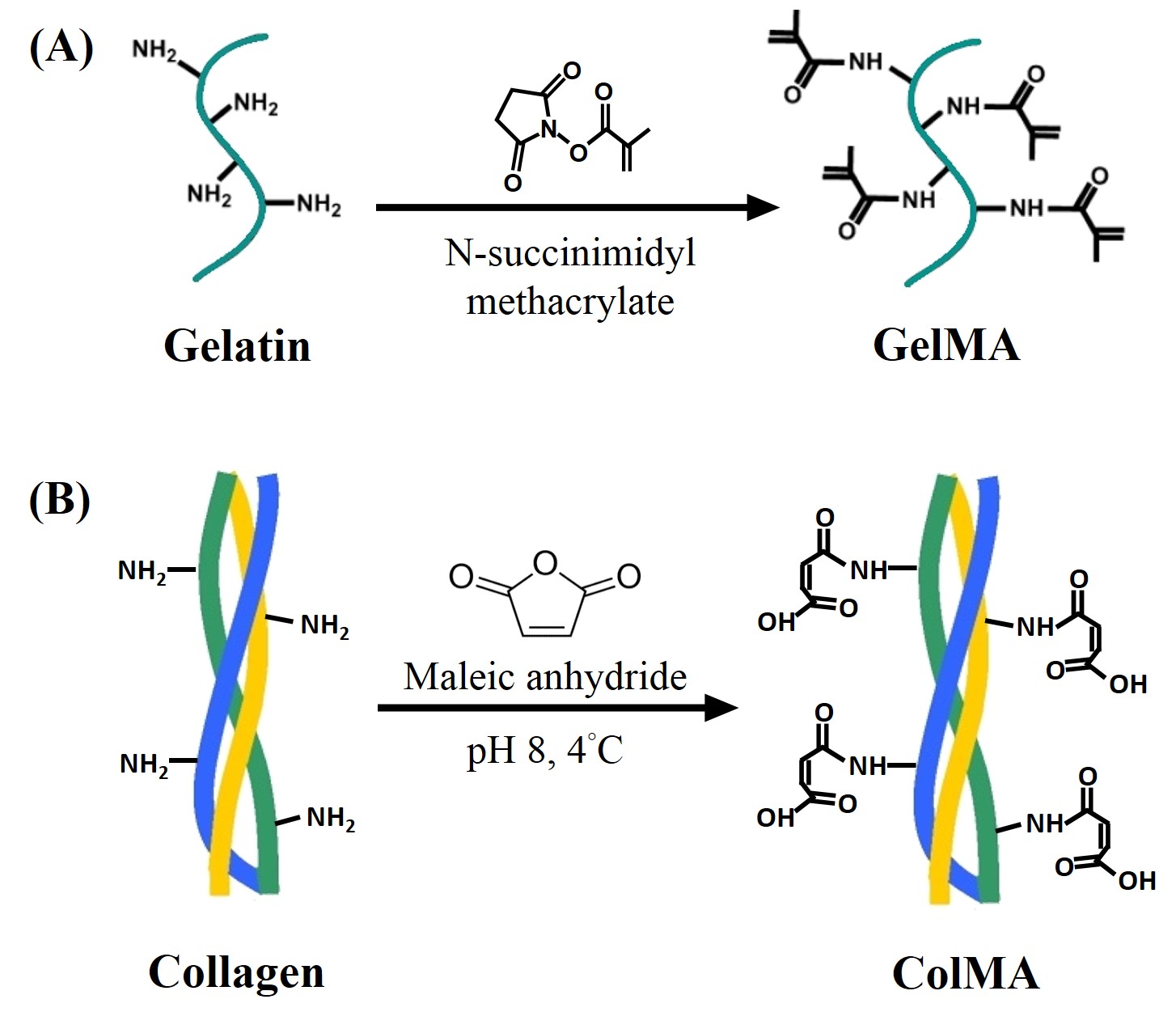Gelatin and collagen possess excellent biocompatibility, biodegradability and bioactivity. However, their poor mechanical properties and fast degradation rates need to be overcome while they are used for biomedical applications. In this study, we fabricated gelatin- and collagen-based hydrogels for controlled drug release. To improve their physical properties, we tried to incorporate small molecules, carboxybetaine methacrylate (CBMA) and poly(ethylene glycol) diacrylate (PEGDA), into gelatin and collagen hydrogels, respectively.
In the first part of study, gelatin methacrylate (GelMA) was firstly synthesized and then formed hydrogels together with CBMA to modulate the properties of gelatin-based hydrogels. With the incorporation of CBMA, better mechanical property, slower degradation rate and retarded drug release rate were observed. GelMA/CBMA hydrogels also showed good cell viability. As to the in vivo test, vascular endothelial growth factor (VEGF)-loaded GelMA/CBMA hydrogels displayed a certain degree of angiogenesis.
In the second part of study, maleilated collagen (ColMA) was synthesized and incorporated with PEGDA to form ColMA/PEGDA hydrogels. DSC analysis indicated that ColMA still retained the triple helical structure. Although there was no significant improvement in mechanical properties of ColMA/PEGDA hydrogels, however, the introduction of PEGDA resulted in an enhanced crosslinking rate and a controlled release of fluorescein isothiocyanate-dextran (FITC-dextran) with higher molecular weight.

Ministry of Science and Technology, R.O.C.
References:
[1] Buwalda, S.J., et al., Hydrogels in a historical perspective: from simple networks to smart materials. J Control Release, 2014. 190: p. 254-73.
[2] Sutter, M., et al., Recombinant gelatin hydrogels for the sustained release of proteins. J Control Release, 2007. 119(3): p. 301-12.